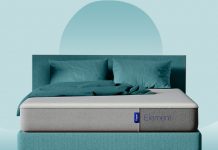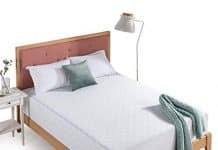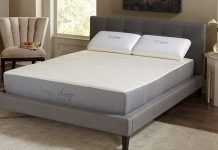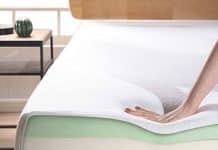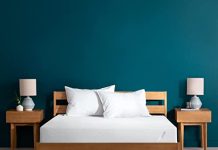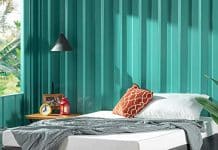Protecting your mattress is essential for maintaining its lifespan and ensuring a comfortable and hygienic sleeping environment. But with so many options available, how do we choose the best mattress protector? In this article, we explore the top contenders in the market, examining their features, durability, and protection capabilities. From waterproof designs to hypoallergenic materials, we’ll guide you through the key factors to consider in selecting a mattress protector that suits your needs and preferences. Say goodbye to stains, allergens, and wear-and-tear – your mattress deserves the best, and we’re here to help you find it. When it comes to finding the best mattress protector, there are several factors to consider. From materials and protection level to breathability, comfort, fit, ease of use, durability, price range, and customer reviews, we want to make sure you have all the information you need to make an informed decision. So, let’s dive in and explore the various aspects of a mattress protector that can greatly enhance your sleeping experience.
Review contents
Materials
The choice of materials in a mattress protector plays a crucial role in determining its overall performance and comfort. Cotton, polyester, bamboo, vinyl, and polyurethane are some common materials used in mattress protectors.
Cotton is a popular choice due to its softness, breathability, and hypoallergenic properties. It allows for better airflow, keeping you cool during hot summer nights. Polyester, on the other hand, offers more durability and is often blended with other materials for added strength.
Bamboo is a natural and sustainable option that boasts excellent moisture-wicking properties. It helps to regulate body temperature by pulling away excess sweat and keeping you dry throughout the night. Vinyl and polyurethane, while not as breathable as natural fibers, provide exceptional waterproofing and protection against spills and stains.
Protection Level
When it comes to protecting your mattress, it’s important to consider the level of protection you require. Waterproof, dust mite resistant, bed bug resistant, and allergen resistant are some factors you should look for in a mattress protector.
A waterproof mattress protector is crucial in preventing liquid spills or accidents from damaging your mattress. It acts as a barrier, keeping your mattress clean and prolonging its lifespan. Dust mite resistant protectors are designed to prevent dust mites from colonizing your mattress, which is beneficial for individuals with allergies or asthma.
Bed bug resistant protectors are specially designed to prevent bed bugs from infesting your mattress, providing an extra layer of defense against these unwelcome critters. Additionally, allergen-resistant protectors are a great choice if you suffer from allergies, as they block dust mites, pollen, and other allergens from entering your mattress.
Breathability
A mattress protector plays a crucial role in maintaining optimal airflow and temperature regulation while you sleep. Factors such as airflow, heat retention, and moisture-wicking properties contribute to the overall breathability of a mattress protector.
Airflow is essential to help keep your body cool and comfortable throughout the night. Look for protectors that promote good air circulation, allowing heat to escape and fresh air to flow. Heat retention can disrupt your sleep by causing discomfort and night sweats, so it’s important to choose a protector that minimizes heat buildup.
Moisture-wicking properties are especially important for those who tend to sweat or experience hot flashes during sleep. A protector that effectively wicks away moisture can help keep you dry, comfortable, and prevent the growth of bacteria or mold.
Comfort
Comfort is of utmost importance when it comes to choosing a mattress protector. After all, it directly affects the way you sleep and the quality of your rest. Several factors contribute to the overall comfort of a mattress protector, including softness, noise level, cooling properties, and hypoallergenic qualities.
Softness is subjective and depends on personal preference. However, many individuals prefer a mattress protector that adds a plush layer of comfort without sacrificing support. Look for options that offer a soft and smooth surface to enhance your sleeping experience.
Noise level is another important consideration, especially if you are a light sleeper. Some protectors may produce crinkling or rustling sounds when you move in bed, which can be disruptive and affect the quality of your sleep. Opt for protectors that are specifically designed to minimize noise.
Cooling properties are beneficial, particularly for those who tend to sleep hot. Look for protectors that have cooling features, such as moisture-wicking materials or breathable fabrics, to help regulate your body temperature and keep you cool.
Hypoallergenic qualities are essential for individuals with allergies or sensitivities. A hypoallergenic mattress protector can provide a barrier against dust mites, allergens, and other irritants, creating a healthier sleep environment.
Fit
A properly fitting mattress protector is essential for its effective functioning and durability. Consider the size options, elasticity, depth, and corner straps when evaluating the fit of a protector.
Size options should align with the dimensions of your mattress. Most protectors come in standard sizes such as Twin, Full, Queen, King, and California King. Ensure that you choose the correct size to ensure a snug fit.
Elasticity is important to keep the protector securely in place without shifting or bunching up during the night. Look for protectors with a good amount of stretch and elasticity to ensure a proper fit and ease of use.
Depth is a crucial factor, especially if you have a thicker or deeper mattress. Make sure the protector you choose is designed to accommodate the depth of your mattress, providing full coverage and protection.
Corner straps are an additional feature that can help secure the protector to your mattress and prevent it from moving. These straps provide added stability and ensure that your protector stays in place, even during movement in bed.
Ease of Use
The ease of use of a mattress protector can greatly influence your overall satisfaction and convenience. Consider aspects such as installation, removal, cleaning, and warranty when evaluating the ease of use.
Installation should be straightforward and hassle-free. Look for protectors that easily slip onto your mattress, with elasticized edges or deep pockets for a secure fit. This will save you time and effort when setting up your protector.
Removal should be just as simple as installation. Choose protectors that can be easily removed and laundered, without any complicated instructions or extra steps. This will ensure that cleaning or replacing your protector is a breeze.
Cleaning your mattress protector is important to maintain cleanliness and prevent the buildup of allergens or odors. Look for protectors that are machine washable, allowing for easy and convenient cleaning. Some protectors may also be tumble dried, simplifying the entire process.
Warranty is another factor to consider when evaluating the ease of use. A good warranty can give you peace of mind and assurance of the product’s quality. Look for protectors that offer a reasonable warranty period, covering any manufacturing defects or issues that may arise.
Durability
Durability is a key consideration when investing in a mattress protector. After all, you want a protector that will withstand regular use and provide long-lasting protection for your mattress. Stitching, fabric strength, construction, and longevity are factors to consider when assessing durability.
Stitching should be strong and reinforced to withstand regular movement and use. Look for protectors with double stitching or durable seams, as they are less likely to come apart or fray over time.
Fabric strength plays a crucial role in the durability of a protector. Opt for protectors made of high-quality materials that are designed to withstand wear and tear. Strong fabrics are less likely to tear or develop holes, ensuring a longer lifespan for your protector.
Construction is another important aspect to consider. Protecto


